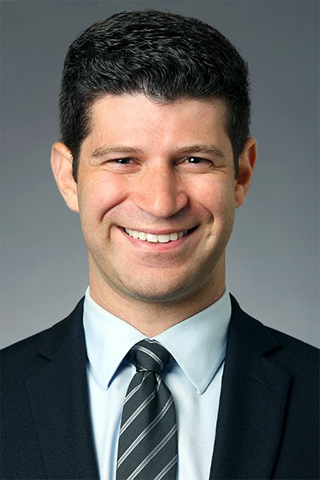Strength Training for Kids and Teens: Is it Safe?
A sports medicine doctor shares advice on how kids and teens can start strength training and weightlifting without running the risk of injury.

Whether it’s because of social media or wanting to excel at sports from an earlier age, a growing number of kids and teens are interested in strength and weight training. While there is ample evidence that exercise benefits young people’s health, hitting the gym without the right guidance can cause injuries.
“Building muscle and being fit is always a healthy choice — no matter what age you are — but there’s a lot of pressure now for young people to grow quicker and bulk up,” says Dr. Elan Goldwaser, a pediatric and adult sports medicine physician at NewYork-Presbyterian and Columbia. “Until you hit puberty and start producing more testosterone, you’re not going to grow muscle, which is why I stress to a lot of teenagers to start a lifting routine for endurance instead of gains.”
With sports seasons in full swing, Health Matters asked Dr. Goldwaser to provide some tips about strength training for teens and how to avoid injuries.

Dr. Elan Goldwaser
Seek guidance from professionals — not influencers.
While the internet can be a source of inspiration in watching people go through their journeys of fitness and health, Dr. Goldwaser is concerned that social media can be misleading filled with curated feeds and even manipulated videos and photos. If a teen or tween is interested in lifting and going to the gym, they should first talk to an adult and ideally consult with a medical professional.
“It’s a slippery slope when you watch famous athletes or people you idolize with a million followers, and it becomes ‘I need to start drinking this energy drink, or lifting this amount of weight,” he says. “I’ve seen too many kids emulate a video and do something foolish. I would avoid taking advice from people on social media, because a lot of times it’s not real.”
Focus on technique before lifting weights.
During puberty, everything in the musculoskeletal system (including the muscles, tendons and ligaments) is growing, and because the growth plates are still open, there’s structural weakness in the bones. As a result, young people are especially vulnerable to injuries when they lift too much weight.
In the prepubescent years, Dr. Goldwaser recommends focusing on technique and fitness. At this age, exercises like sit-ups, pushups, chin-ups, burpees, and sprints are even more helpful than going to the gym. Once a teen is old enough, then they can begin to incorporate strength training with weights. “When you are ready to grow muscles, there’s a ladder to it,” says Dr. Goldwaser. “It’s not about maxing out at 500 pounds with one rep. There’s a regimen for achieving higher and higher weights while still balancing strength with agility drills, stretching, yoga and pilates.”
Think about your whole body.
“Every joint in the body is connected, so you want to have strength from the hand to the toe.” says Dr. Goldwaser. “For example, a pitcher doesn’t just need to work on the upper arm. After they cock back the arm, the hip moves forward first and the lower back, and then the arm and follow through. It’s your whole body.”
Similarly, for runners, a strength training plan should incorporate the inner thigh and outer hip because the running motion naturally builds quads and hamstring muscles. And soccer players can avoid injury to the knees and quads by strengthening the hamstrings.
“I can’t tell you how many football kickers come to me and say, “I’m a rightie and this is my golden leg, and they show me how massive their quads are on their right leg and not their left,” says Dr. Goldwaser. “But they need the left leg to stabilize and the hip to help generate power.”
Don’t forget to stretch and recover.
The more flexible you are, the less likely you are to get hurt. Dr. Goldwaser recommends stretching before any activity and doing yoga. “You need to balance out weight training with stretching because the muscle inevitably will not work as well if it’s too tight,” he says.
In addition to stretching, recovery is key: Work out three or four days and then take one day of rest. “The rest day is not just doing nothing,” says Dr. Goldwaser. “It’s active recovery, meaning you take in your electrolytes, eat protein, get enough sleep, and do things to heal sore muscles like icing, heating or massage.”
Maintain a healthy diet, and steer clear of supplements.
The trend in strength training among teens has led to thousands of social media posts promoting a wide range of diet and nutrition tips to help build muscle. While some of it is backed by science, it’s difficult to distinguish between fact and fiction. There has also been a concerning increase in content about supplements for muscle building aimed specifically at teens, even prompting the Food and Drug Administration to issue a warning to the public last year.
“I run into conversations about supplements and steroids a lot,” says Dr. Goldwaser. “I’m not necessarily seeing an abuse, but there are a lot of unhealthy and risky products out there. I caution patients to be weary of any products with performance enhancing claims, even those marked as ‘natural,’ ‘safe’ or ‘regulated’. It’s always best to talk to a medical professional first.”
